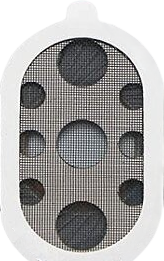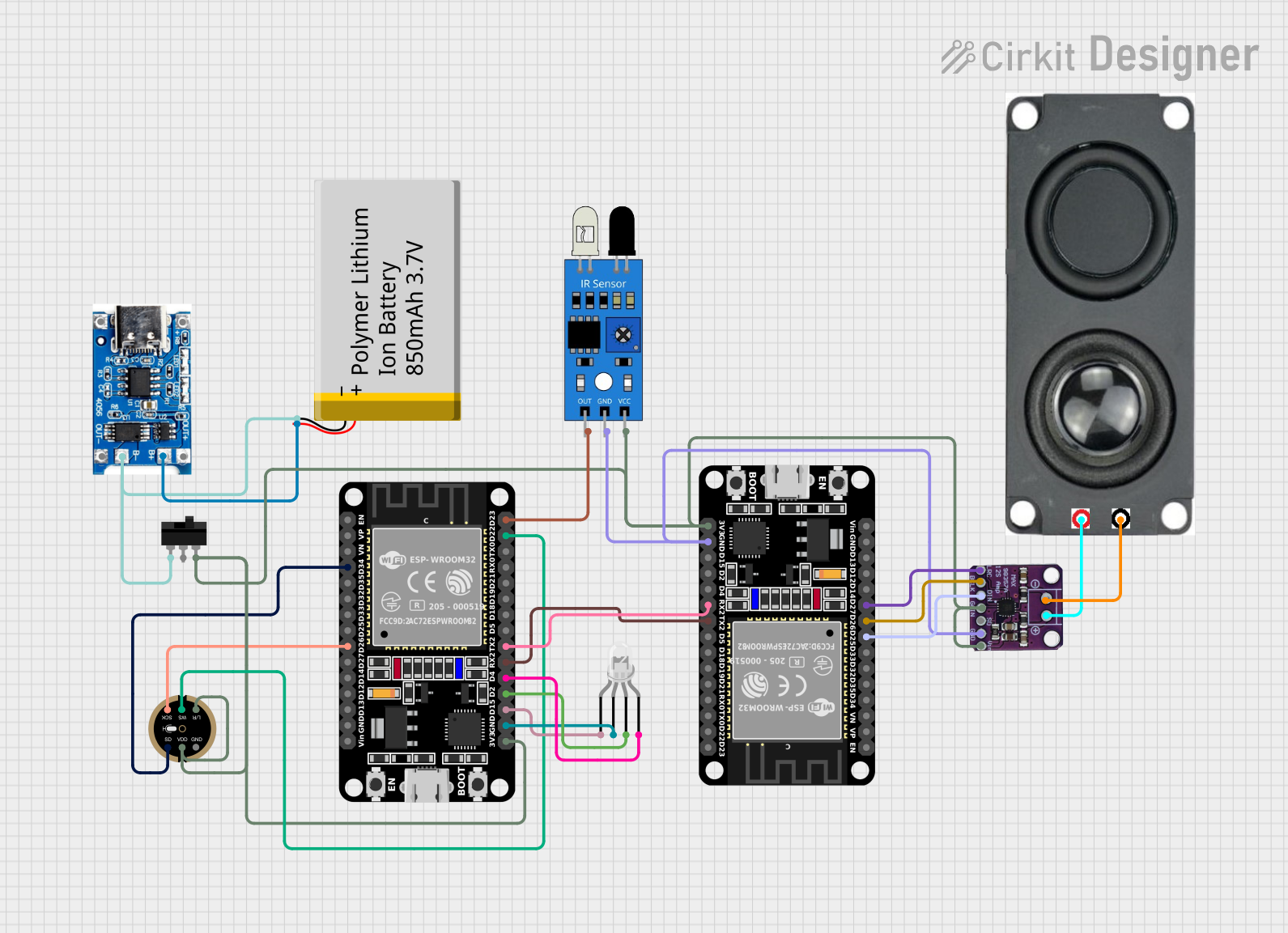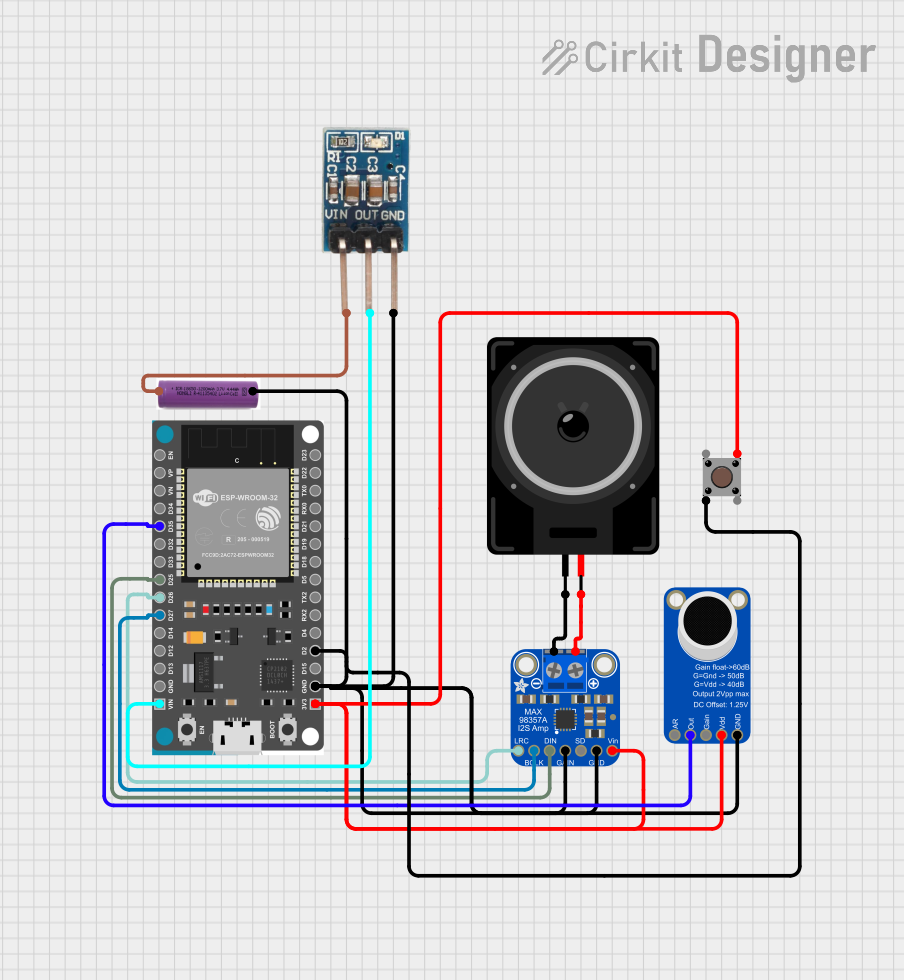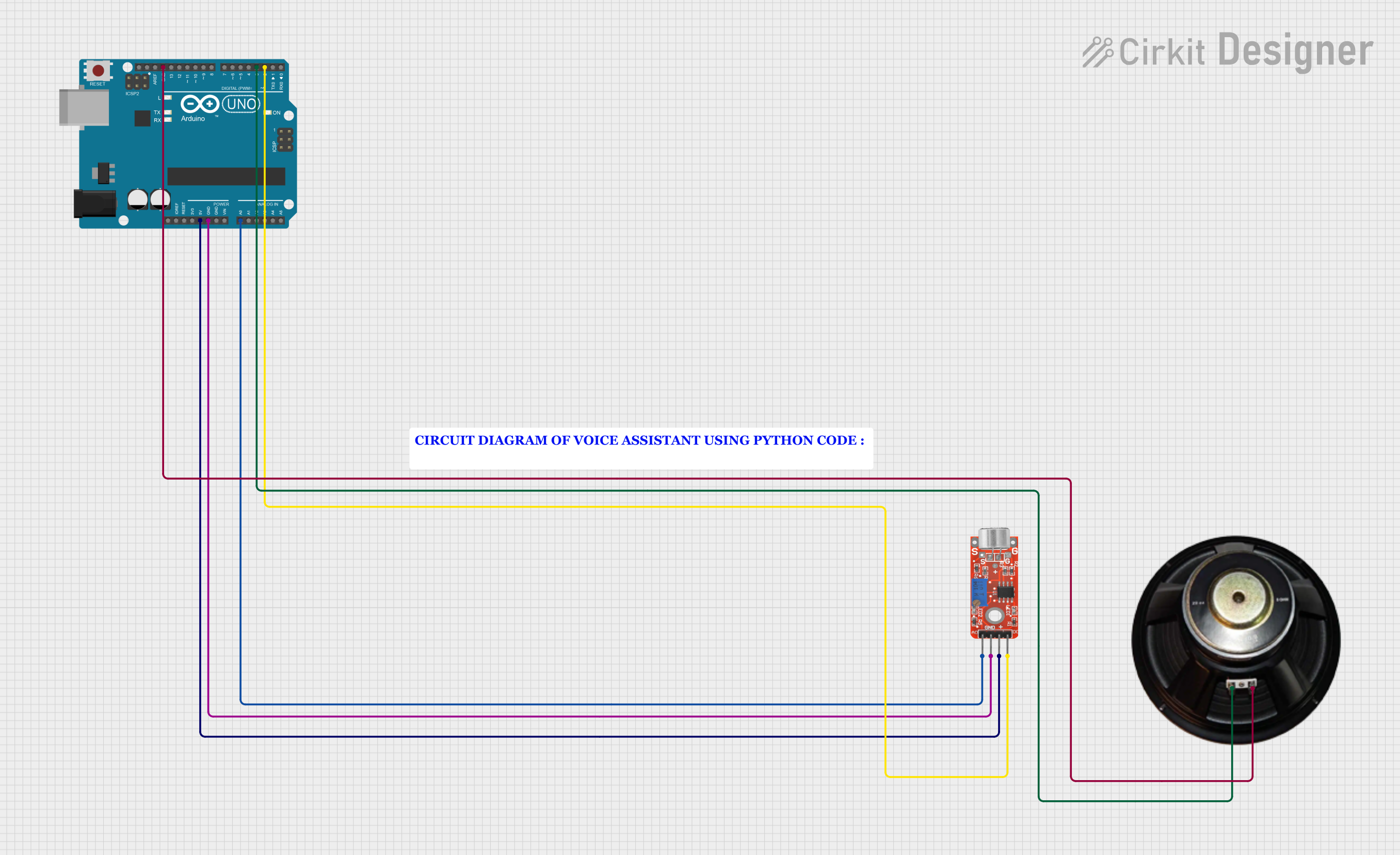
How to Use Speaker: Examples, Pinouts, and Specs

 Design with Speaker in Cirkit Designer
Design with Speaker in Cirkit DesignerIntroduction
The 1.5W 8Ω Speaker is a versatile audio component designed to convert electrical signals into sound waves. This speaker is commonly used in various audio systems, including radios, televisions, computers, and DIY electronics projects. Its compact size and efficient performance make it an ideal choice for both hobbyists and professionals.
Explore Projects Built with Speaker

 Open Project in Cirkit Designer
Open Project in Cirkit Designer
 Open Project in Cirkit Designer
Open Project in Cirkit Designer
 Open Project in Cirkit Designer
Open Project in Cirkit Designer
 Open Project in Cirkit Designer
Open Project in Cirkit DesignerExplore Projects Built with Speaker

 Open Project in Cirkit Designer
Open Project in Cirkit Designer
 Open Project in Cirkit Designer
Open Project in Cirkit Designer
 Open Project in Cirkit Designer
Open Project in Cirkit Designer
 Open Project in Cirkit Designer
Open Project in Cirkit DesignerTechnical Specifications
Key Technical Details
| Parameter | Value |
|---|---|
| Power Rating | 1.5W |
| Impedance | 8Ω |
| Frequency Range | 200Hz - 20kHz |
| Sensitivity | 85dB |
| Diameter | 50mm |
| Height | 20mm |
Pin Configuration and Descriptions
| Pin Number | Description |
|---|---|
| 1 | Positive Terminal |
| 2 | Negative Terminal |
Usage Instructions
How to Use the Component in a Circuit
Identify the Terminals: The speaker has two terminals, marked as positive (+) and negative (-). Ensure you correctly identify these terminals before connecting the speaker to your circuit.
Connect to an Audio Source: Connect the positive terminal of the speaker to the positive output of your audio source (e.g., an amplifier or an Arduino pin). Similarly, connect the negative terminal to the ground (GND) of your audio source.
Power Considerations: Ensure that the power supplied to the speaker does not exceed its rated power of 1.5W to avoid damage.
Amplification: If the audio signal is weak, consider using an amplifier to boost the signal before it reaches the speaker.
Important Considerations and Best Practices
- Impedance Matching: Ensure that the impedance of the speaker (8Ω) matches the output impedance of your audio source to prevent distortion and potential damage.
- Volume Control: Use a potentiometer or a digital volume control to adjust the volume and prevent overdriving the speaker.
- Mounting: Securely mount the speaker in an enclosure to enhance sound quality and protect it from physical damage.
Example: Connecting to an Arduino UNO
To demonstrate how to use the 1.5W 8Ω Speaker with an Arduino UNO, we will create a simple circuit that plays a tone.
Circuit Diagram
Arduino UNO Speaker
GND -------------- Negative Terminal
Pin 8 -------------- Positive Terminal
Arduino Code
/*
* Simple Arduino sketch to play a tone on a 1.5W 8Ω Speaker
* connected to pin 8.
*/
const int speakerPin = 8; // Define the pin connected to the speaker
void setup() {
pinMode(speakerPin, OUTPUT); // Set the speaker pin as an output
}
void loop() {
tone(speakerPin, 1000); // Play a 1kHz tone
delay(1000); // Wait for 1 second
noTone(speakerPin); // Stop the tone
delay(1000); // Wait for 1 second
}
Troubleshooting and FAQs
Common Issues Users Might Face
No Sound Output:
- Solution: Check the connections to ensure the speaker is properly connected to the audio source. Verify that the audio source is functioning correctly.
Distorted Sound:
- Solution: Ensure that the power supplied to the speaker does not exceed its rated power of 1.5W. Check for impedance matching between the speaker and the audio source.
Low Volume:
- Solution: Use an amplifier to boost the audio signal. Ensure that the audio source provides a sufficient signal level.
FAQs
Q1: Can I use the 1.5W 8Ω Speaker with a microcontroller other than Arduino?
- A1: Yes, you can use this speaker with any microcontroller that can generate audio signals. Ensure that the microcontroller's output pin can drive the speaker or use an amplifier if needed.
Q2: How can I improve the sound quality of the speaker?
- A2: Mount the speaker in a suitable enclosure to enhance sound quality. Ensure proper impedance matching and use an amplifier if necessary.
Q3: What is the maximum volume I can achieve with this speaker?
- A3: The maximum volume depends on the power supplied to the speaker. Ensure that the power does not exceed 1.5W to avoid damage. Use an amplifier to achieve higher volume levels if needed.
By following this documentation, users can effectively integrate the 1.5W 8Ω Speaker into their audio projects, ensuring optimal performance and sound quality.